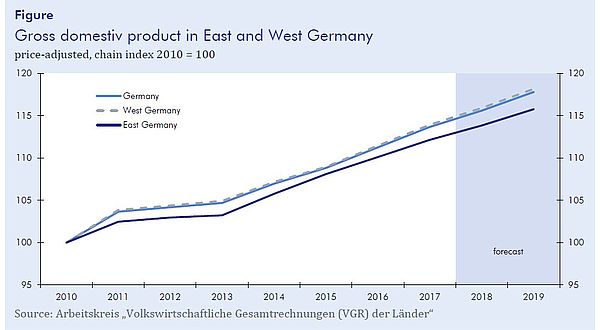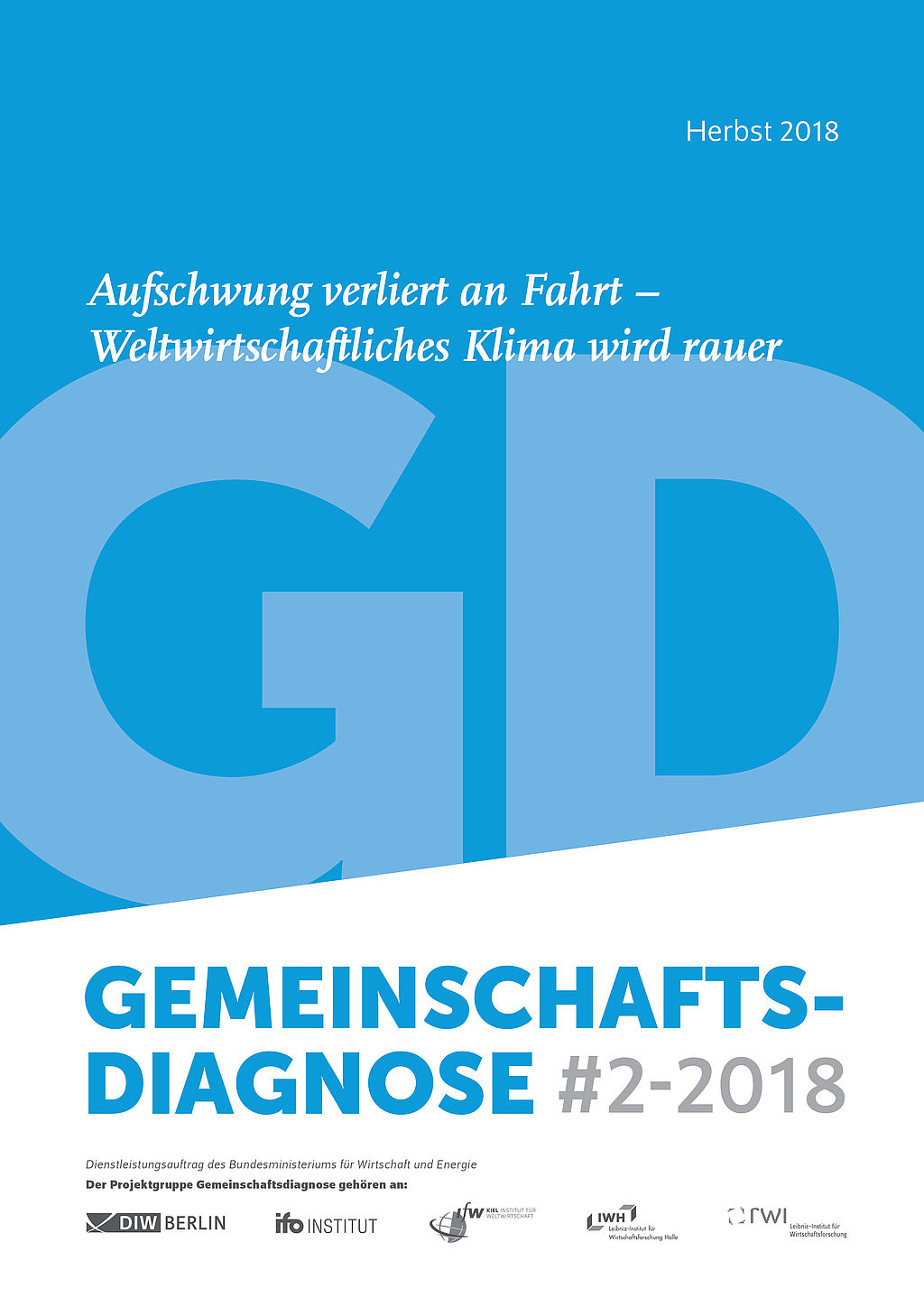Upswing in East Germany has slowed, but continues – implications of the joint forecast of the German economic research institutes in autumn 2018 and of official data for the Eastern German economy in the first half of 2018

All in all, the Halle Institute for Economic Research (IWH) – Member of the Leibniz Association predicts an increase in East German gross domestic product by 1.5% for the year 2018 (Germany as a whole: 1.7%), after 1.9% in 2017. In 2019, East German production is likely to expand at a slightly different rate (1.7%). The unemployment rate is expected to fall from 7.6% in 2017 to 6.9% in 2018 and 6.6% in 2019 (Germany in 2017: 5.7%, 2018: 5.2 %, 2019: 4.8%).
Whom to contact
For Researchers

Vice President Department Head
If you have any further questions please contact me.
+49 345 7753-800 Request per E-MailFor Journalists

Head of Public Relations
If you have any further questions please contact me.
+49 345 7753-720 Request per E-MailIWH list of experts
The IWH list of experts provides an overview of IWH research topics and the researchers and scientists in these areas. The relevant experts for the topics listed there can be reached for questions as usual through the IWH Press Office.
Related Publications

Upturn Loses Momentum – World Economic Climate Grows Harsher: Joint Economic Forecast Autumn 2018
in: Externe Monographien, 2, 2018
Abstract
The economic upturn in Germany is entering its sixth year, but is losing momentum. This is due to both demand and supply side factors. On the one hand, Germany’s key sales markets have weakened in line with the slowdown in world trade. On the other hand, a growing number of companies are apparently facing production-side bottlenecks, especially in terms of labour and sourcing intermediate goods. This overlaps with problems in the automotive industry related to the introduction of the new World Harmonised Light Vehicle Test Procedure (WLTP), which has clearly impacted gross domestic product (GDP) growth due to the branch’s economic weight. Adjustment problems, however, should be overcome in the course of the winter half year. Stimuli from fiscal policy measures will also take effect as of the beginning of 2019. After 1.7% growth this year, economic output will increase at rates of 1.9% in 2019 and 1.8% in 2020. Employment will continue to expand clearly, although at a slower pace. The number of registered unemployed persons will approach the 2 million-mark by the end of the forecasting horizon. Inflation will pick up from an average rate of 1.8% this year to 2.0% in 2019 and 1.9% in 2020. Despite its expansionary fiscal stance, the German government will continue to post a budget surplus, although this can be expected to fall from 54 billion euros to around 40 billion euros.



